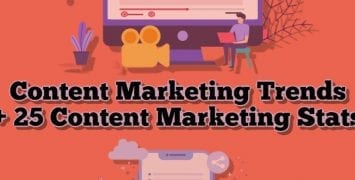Your blog is up and running. You’re publishing new, engaging content on a regular basis. Your posts provide information that your audience is interested in. Does this mean your blogging efforts are successful?
Not necessarily. Many SEO pros spend a ton of time developing their blog – but then fail to properly measure the blog’s engagement! Your blog might seem active and popular but could actually be doing nothing useful for your business.
Fortunately, numbers never lie. If you focus on the right metrics, you’ll always know how your blog is impacting your brand.
Here’s a complete run-down of what numbers to pay attention to. I’ll show you how to analyze each metric, what it’s telling you and even easy ways to improve reader engagement.
Bounce Rate Defined
A user clicks a link somewhere which leads them to a landing page on your site. If they hit the back button, and leave that page without visiting additional pages on your site, they “bounced.”
You want users to continue through to other pages on your site. This means their first impression of your brand was favorable and they were interested in more of your content.
A bounce rate of zero means every person who lands on your site stays. This ideal, but obviously not realistic. The average bounce rate is 45%, so if you’re under that you’re in reasonably good shape.
How to Prevent a High Bounce Rate
Preventing a high bounce rate is actually pretty easy. Simply deliver what you say you will. When people click on a link, they expect to find the content the link promised.
Be specific and exact. If someone clicks on a link for a blog post titled “How to Keep Weeds Out of Your Lawn” don’t direct them to the homepage of your landscaping business. People who feel deceived will often bounce – after all, wouldn’t you?
Conversion Rate Defined
How many people who view your website then go on to sign up for more information? This your conversion rate. While a “conversion” can be a sale, it can also be an opt-in or another request for additional information from your brand.
People don’t hand over their email address (or their money) to just anyone. You need to entice them first with free content. This can be a blog post, infographic, webinar, or other content you create.
At the end of this content, you want to then present your reader with a call-to-action. In exchange for their email address, you’ll send them additional content related to what they just read.
For instance, if you presented a blog post about social media marketing, you might then offer access to a free webinar where you’ll teach people how to double their conversion rate using Facebook.
If your blog post established your brand as a trustworthy authority, people will be more likely to want additional content from you.
In order to maintain a healthy conversion rate, you have to do three things:
- Create quality content initially on topics your audience wants to know about
- At the end of the content, insert Call to Action with a clear, direct promise of additional content
- Deliver on that promise with more quality content
Your reader has now entered your Conversion Funnel. This a series of engagements designed to connect the reader to your brand. Check out 6 Great Ways to Welcome New Customers for more info on this process.
Content Shares Defined
Shared content is a great sign you’re discussing topics that your audience is interested in. People don’t bother to share content they think no one else will be interested in.
Aside from quality content, you also want to make your content easy to share. Embed Facebook, Twitter, and other social media buttons at the end of the article. This lets readers easily share your content across their social media platforms.
Follow these 4 Tips for Creating Content Your Readers Will Respond To. This will make your content easy to digest. Keep in mind some people share content without reading it completely, so make sure your headlines are catchy and informative.




